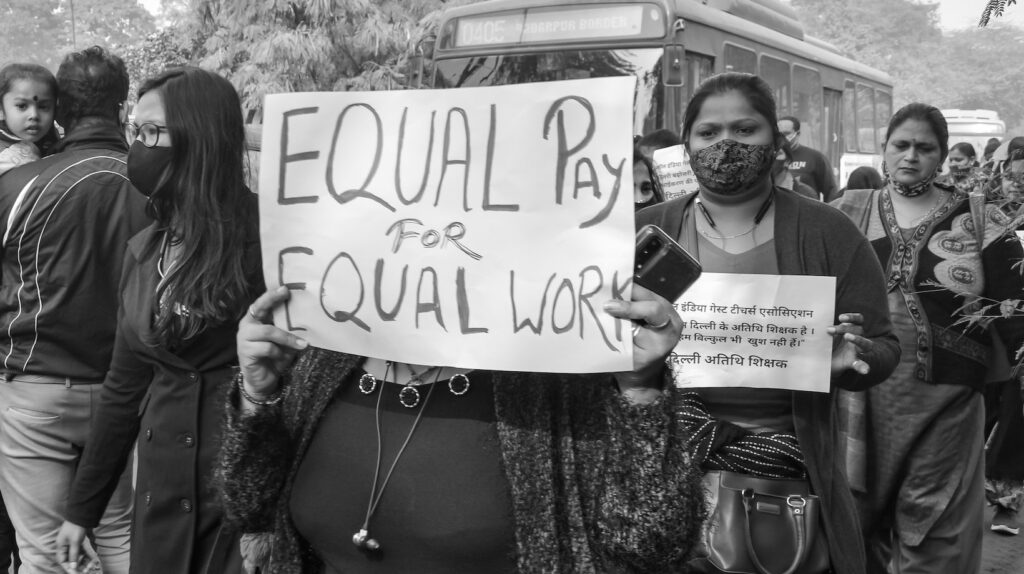The Essence of the March on Washington
We’re often asked, “Which best describes the March on Washington for Jobs and Freedom?” To answer this question, we need to delve into its essence. The march was a monumental demonstration that took place in 1963. It’s widely remembered as a pivotal moment in American history, where an estimated quarter-million people gathered at the National Mall in Washington D.C., all uniting for a common purpose.
Table of Contents
ToggleTheir objective? A bold demand for civil and economic rights for African Americans. In essence, it was a march towards freedom – freedom from discrimination, prejudice, and economic disparity. It pushed forward matters concerning racial justice and marked a turning point in America’s civil rights movement.
An essential part of the march was the famous ‘I Have a Dream’ speech by Martin Luther King Jr. This iconic address became synonymous with the event itself, amplifying its impact across borders. It echoed not just through Lincoln Memorial but resonated throughout the world – inspiring millions to stand up against racism.
However, it wasn’t just about speeches or demonstrations; it was also about demanding policy changes. The organizers had clear demands including an end to racial segregation in public schools, meaningful civil rights laws with proper enforcement mechanism and protection against police brutality among others.
The March on Washington represented more than just an isolated event; it embodied hope and change. We can confidently say that it played a significant role in shaping America’s journey towards equality and justice for all.
Major Figures Behind the March
Let’s dive into the notable figures that were pivotal to the March on Washington for Jobs and Freedom. At the forefront, we find Martin Luther King Jr., whose iconic “I Have a Dream” speech still resonates worldwide today. His nonviolent approach and powerful oratory skills played a significant role in mobilizing thousands of people.
Yet, it wasn’t just King who steered this monumental event. There was A. Philip Randolph, often deemed as the march’s primary architect. He’d been fighting for equal rights since World War I and initially conceived an idea of a mass protest on Washington during the 1940s.
We also have to mention Bayard Rustin, who worked behind the scenes as an organizer. Despite facing criticism due to his sexuality, Rustin’s logistical prowess was instrumental in ensuring that the march ran smoothly.
Then there were co-organizers like Roy Wilkins and Whitney Young Jr., both leaders of prominent civil rights organizations—the NAACP and National Urban League respectively—who lent their support to this cause.
Of course, we can’t forget about John Lewis, then chairman of Student Nonviolent Coordinating Committee (SNCC). Despite being one of the youngest speakers at the march, his impactful words left an indelible mark on everyone present.
- Martin Luther King Jr.
- A. Philip Randolph
- Bayard Rustin
- Roy Wilkins
- Whitney Young Jr.
- John Lewis
These are just few among many other unsung heroes who risked everything for equality and freedom – embodying what best describes The March on Washington for Jobs and Freedom. Their courage continues to inspire us even today as we strive towards creating a society that truly values equality and justice for all.
Which Best Describes the March on Washington for Jobs and Freedom?
Let’s dive deeper into understanding why jobs and freedom played such a crucial role in the March on Washington. The event, which best describes the march on Washington for jobs and freedom, was not just about civil rights but economic equality as well.
At its heart, the march was a demand for equal job opportunities for everyone, regardless of race. We’re talking about a time when African Americans were largely bypassed by post-World War II prosperity. Unemployment rates among black citizens were soaring high compared to their white counterparts.
These disparities led to an urgent call for action – hence, the birth of this historic march.
Moving onto ‘freedom’, it symbolized an end to segregation and racial discrimination that plagued society then. Remember, these issues weren’t just confined within southern states; they reflected nationwide attitudes towards race relations.
The combination of ‘jobs’ and ‘freedom’ in this context thus underlined two intertwined aspects – economic stability and social justice – central to African American empowerment.
So when we talk about what best describes the March on Washington for Jobs and Freedom, we can’t overlook how deeply rooted it was in these twin causes: employment equity and racial equality. These are not just historical points but ongoing struggles that resonate even today in our fight against systemic racism.












